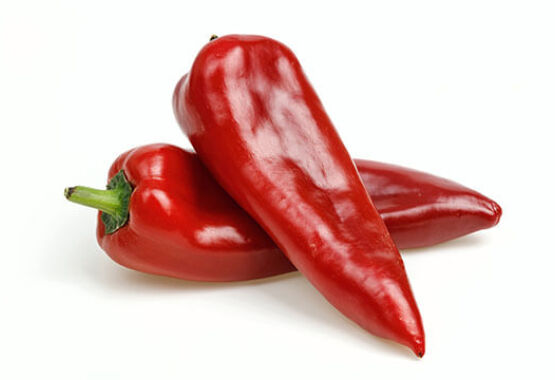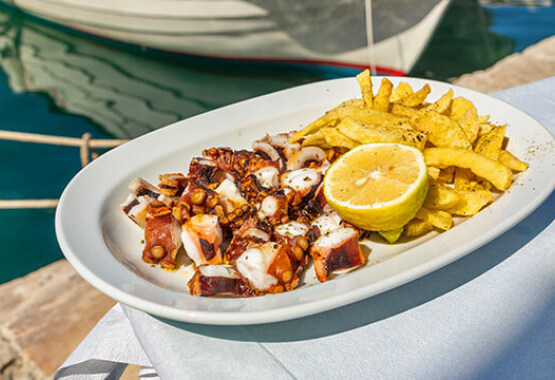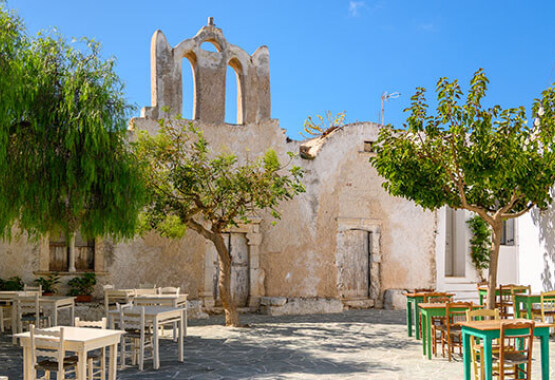
AMORGOS
Not least of these reasons is its rich culinary tradition of delicious, local products and recipes that add another dimension to the already popular island of the Cyclades.
Quality raw materials, mouth-watering aromas, special flavours and original recipes make up the gastronomic puzzle of Amorgos, in a unique combination of local tradition with more modern culinary options.
Choice cheeses, fresh fish and quality meats
The some 13,000 sheep and goats raised by the livestock farmers on this mountainous and rocky island produce large amounts of milk, a significant percentage of which is converted by traditional manufacturing methods into excellent quality cheeses with a rich taste and intense character.
The most recognizable cheeses of Amorgos are the Amorgianos, reminiscent of kefalotyri and malaka, a local variation of mizithra. Also of special interest is the sour xinomizithra, which is dried and hardened in open air for several weeks. The kopanisti or mizithra is a classic traditional Cycladic cheese, whose variation in Amorgos is less spicy compared to the famous version of Mykonos.
The sheep and goats of Amorgos play an important role in various local recipes. The famous casserole potato, for example, is a dish with lamb, potatoes and red cinnamon-flavored sauce served at weddings and festivals. Moreover, the Easter table is dominated by goat stuffed with rice, entrails and a delicious variety of local aromatic herbs.
The vinegar-based xidato is a quintessentially traditional Amorgian dish. It is a less intense version of patsas (tripe soup) with plenty of vinegar (xidi in Greek). The locals serve it as soup after all nighters on the eve of the big religious holidays. Amorgos also produces well-known pastourma, from goat or mutton, instead of buffalo which is commonly used elsewhere.
As an island in the heart of the Aegean, there is naturally plenty of fresh fish on Amorgos, with trawlers loaded with rofos (groupers), synagrida (dentex), vlachos, bonitos and small tuna.
Typical seafood dishes include the popular savori, made mainly with barbouni (red mullets) or alternatively with gopa (bogue). Also famed is the Amorgian kakkavia, a fish soup with skorpina (red scorpion fish), petropsaro (stonefish), hanos (combers) lychnos (stargazer) and perch. Fresh squid and octopuses caught in the island’s seas are also fine appetizers.
Amorgos’ Gastronomy
Amorgos’ reputation as the filming location of The Big Blue may most likely follow it forever, but apart from the stunning Agia Anna beach that enchanted the director Luc Besson, there are also many other reasons to visit this Aegean island.Not least of these reasons is its rich culinary tradition of delicious, local products and recipes that add another dimension to the already popular island of the Cyclades.
Quality raw materials, mouth-watering aromas, special flavours and original recipes make up the gastronomic puzzle of Amorgos, in a unique combination of local tradition with more modern culinary options.
Choice cheeses, fresh fish and quality meats
The some 13,000 sheep and goats raised by the livestock farmers on this mountainous and rocky island produce large amounts of milk, a significant percentage of which is converted by traditional manufacturing methods into excellent quality cheeses with a rich taste and intense character.
The most recognizable cheeses of Amorgos are the Amorgianos, reminiscent of kefalotyri and malaka, a local variation of mizithra. Also of special interest is the sour xinomizithra, which is dried and hardened in open air for several weeks. The kopanisti or mizithra is a classic traditional Cycladic cheese, whose variation in Amorgos is less spicy compared to the famous version of Mykonos.
The sheep and goats of Amorgos play an important role in various local recipes. The famous casserole potato, for example, is a dish with lamb, potatoes and red cinnamon-flavored sauce served at weddings and festivals. Moreover, the Easter table is dominated by goat stuffed with rice, entrails and a delicious variety of local aromatic herbs.
The vinegar-based xidato is a quintessentially traditional Amorgian dish. It is a less intense version of patsas (tripe soup) with plenty of vinegar (xidi in Greek). The locals serve it as soup after all nighters on the eve of the big religious holidays. Amorgos also produces well-known pastourma, from goat or mutton, instead of buffalo which is commonly used elsewhere.
As an island in the heart of the Aegean, there is naturally plenty of fresh fish on Amorgos, with trawlers loaded with rofos (groupers), synagrida (dentex), vlachos, bonitos and small tuna.
Typical seafood dishes include the popular savori, made mainly with barbouni (red mullets) or alternatively with gopa (bogue). Also famed is the Amorgian kakkavia, a fish soup with skorpina (red scorpion fish), petropsaro (stonefish), hanos (combers) lychnos (stargazer) and perch. Fresh squid and octopuses caught in the island’s seas are also fine appetizers.




